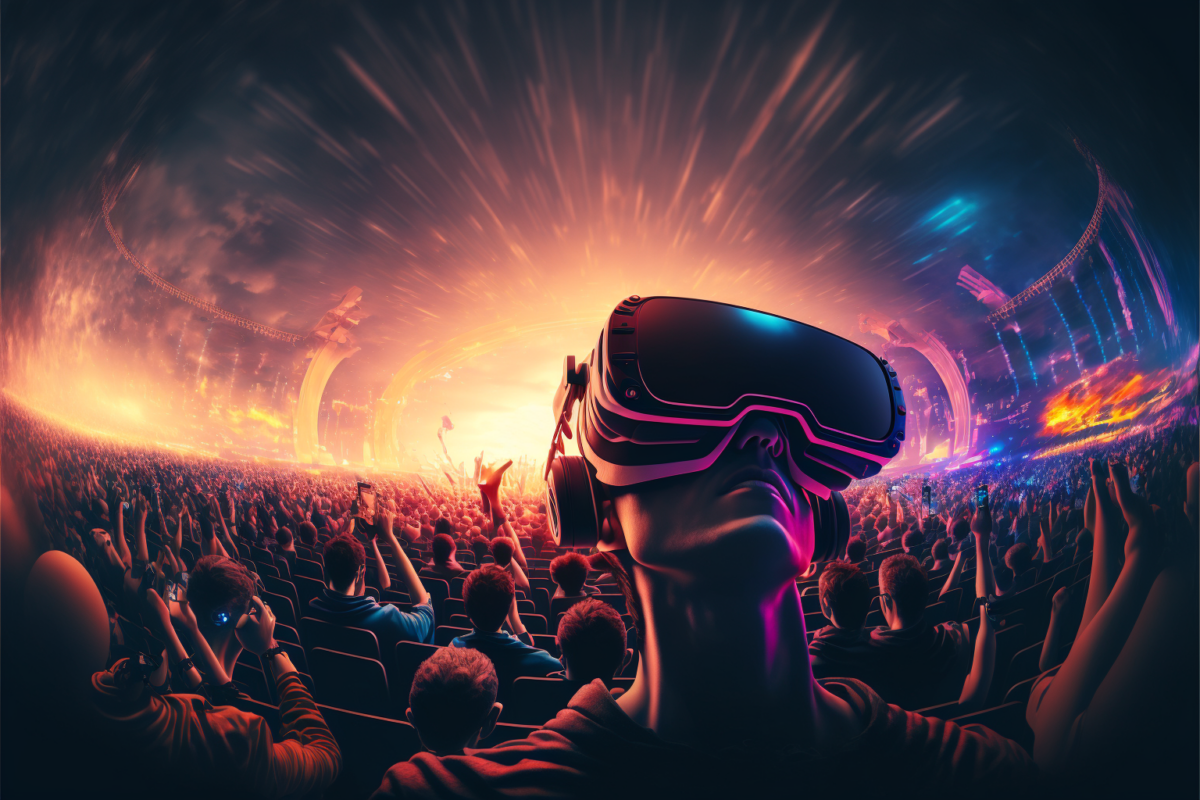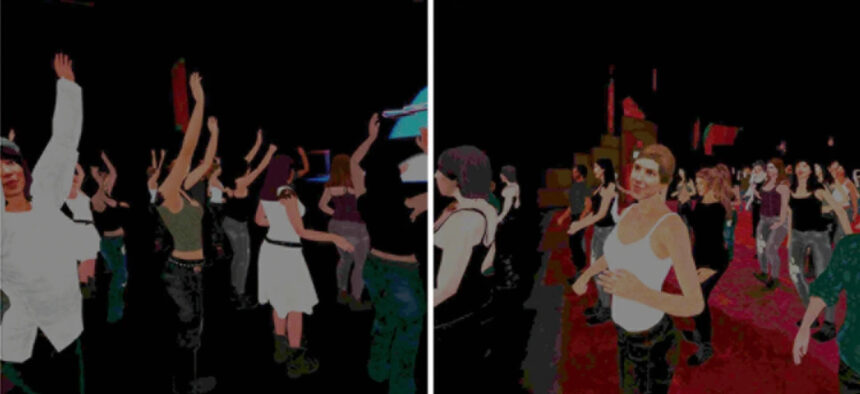Nobody wants gawkers at a VR concert

A study examines when visitors to virtual concerts feel uncomfortable and which element particularly promotes immersion.
How much realism is needed to make visitors to VR concerts feel like they are at a real event? Spanish researchers asked themselves this question and attempted to capture the feelings of VR partygoers in a study.
The results show that the virtual audience at VR concerts can have a greater impact on users than the performance on stage, and that being alone among strangers in virtual reality is no fun. But the experiment has weaknesses.
Researchers recreate live Dire Straits concert in VR
The University of Barcelona recreated a live show by the rock band Dire Straits in virtual reality for the study. The ten-minute clip from a 1983 concert shows a performance of what is probably their best-known hit, "Sultans of Swing."
Unlike immersive VR concerts like that of the band Bastille, where only a video is embedded in a VR environment, here a virtual version of the band performs on a stage. The audience also consists of virtual people.
For the study, a total of 26 subjects were equipped with VR headsets and found themselves in about the sixth row in front of the virtual stage at the VR concert. All participants attended the VR concert alone and stood in a fixed place surrounded by animated fans in the audience.
After the event, all participants wrote down their subjective perceptions. In particular, they were asked to refer to their feelings during the concert, to note their movements and those of the audience, and to record aspects that promoted immersion as well as those that were rather disturbing.
VR concertgoers were afraid of the audience
During the study, the researchers increased the quality of the animations, lighting and ambient sounds, which also included conversations among the virtual guests.
They also added an interaction option: If participants looked at a virtual person in their vicinity, there was a high probability that this person returned the look with a smile for one to three seconds.

The animated audience made users uncomfortable with their looks. | Image: University of Barcelona
The researchers actually assumed that reactions such as eye contact with animated figures would increase the subjects' perception of reality. However, most participants felt put off by the reactions of the VR audience.
In their field reports, male and female participants alike described their discomfort. Some excerpts from their reports:
- “… whenever I turned around the people closest to me stopped watching the concert and turned their attention toward me. I may have been imagining it, but it was none the less, a little creepy”
- “When I turned in the direction of someone they’d stare at me until I turned back, which was a little unsettling”.
- “Every time I looked at the woman to my right and the woman to my left a little behind me, they turn to look at me and stare for the amount of time I would expect a friend to stare. Because they are strangers to me, I would not expect them to acknowledge my glances or to only look over with their eyes for a second. Turning their bodies and looking at me for such a long time made me feel uncomfortable”.
- “The clapping did not sound right to me. It sounded as if it were also coming out of the guitar amps in the venue like the music. I would have expected it to sound much louder and closer to me”.
- “The crowd stood farther apart than expected”.
- “At no time did I really have the feeling of being at a real concert. Starting with the band, I missed the interaction with the audience as well as within the band itself”.
- “The crowd seemed too far apart - like it was a socially distanced gig, which drew me out”.
However, the virtual audience was not only disturbing because of their obvious stares. Although none of the characters reacted to the human participants in the first part of the study or during the entire concert, some still felt observed afterwards.
Of course, these impressions may depend on the app used, which in this case is not particularly high quality graphically (see end of article).
Lack of diversity and movement are mood killers
Another major criticism among male and female subjects was that the audience consisted exclusively of virtual women. A circumstance that consistently caused irritation and disturbed the immersion.
The audience's inability to move to the stage, inappropriate crowd movement and noise, and the band's lack of mobility were also criticized as immersion-disrupting.
On a positive note, many liked the spatial sound of the live music and the audience noise. This gave the test subjects the feeling of being in the audience in front of a real stage. Overall, the VR concert was received more positively by men than by women.
Audience behavior was more important for immersion than what was happening on stage
The virtual audience was most likely to provide an immersive experience when clapping, dancing, and cheering were in sync with the music and dynamics of Dire Straits' VR performance. When this was not the case, users were disconnected from the experience.
Overall, the researchers found that users' individual moods were dominated by reactions to the audience rather than the band. Being alone among virtual strangers at a concert also seemed to pose a kind of social threat to some participants.
However, the design of the study is quite questionable, as it is not a realistic re-enacted concert. The static and staring virtual concertgoers remind me of the VR version of Emily Wants To Play. I don't need a study to know that having someone stare at me permanently and for no reason creeps me out.
The results of this study read more like self-fulfilling prophecies, based on the lackluster implementation described and seen in the video: if I make a virtual environment technically flawed and one-dimensional - what do you think the reception will be like?
Nevertheless, social VR developers could take away one or two points from the study, such as the relevance of audience behavior for immersion.
Note: Links to online stores in articles can be so-called affiliate links. If you buy through this link, MIXED receives a commission from the provider. For you the price does not change.